TRAVEL
Digital Nomad, Galapagos Edition: Amidst the blue-footed boobies
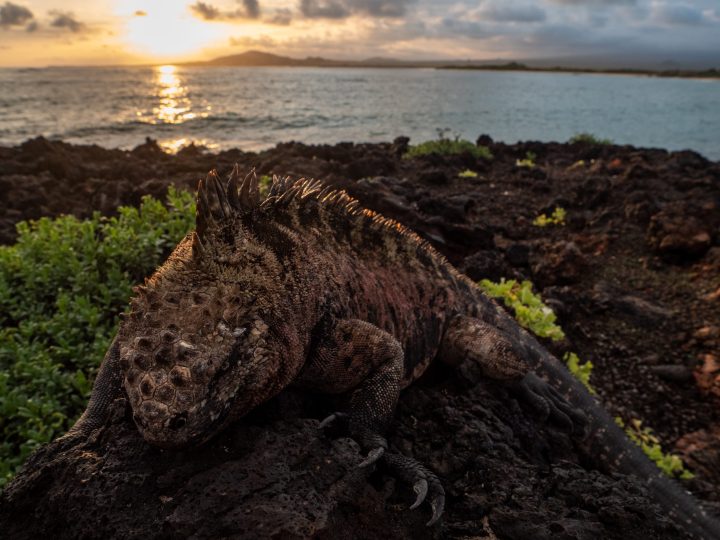
A thousand kilometres off the coast of Ecuador and straddling the equator, the Galapagos archipelago is one of the most fascinating and remarkable places in the world.
“Seen any boobies yet?” That’s what a friend asked me after I’d posted that I was in the Galapagos islands. It’s what most people ask, for boobies – along with giant tortoises, marine iguanas, sea lions, manta rays, hammerhead sharks, Darwin’s finches and Charles Darwin himself – are synonymous with the archipelago.
“Only of the blue-footed variety,” I replied.
I’d taken a day cruise from the town of Puerto Ayora on Santa Cruz island to the nearby island of North Seymour, home to a large population of blue-footed boobies, magnificent frigatebirds and great frigatebirds. Male magnificent frigatebirds have a purplish sheen on their black back feathers, whereas male great frigatebirds have a green sheen. And magnificents are bigger than greats. (Duh!)

Blue-footed boobies rest on volcanic rocks near tourist cruise ships on Isabela island on January 21, 2019 in Galapagos Islands, Ecuador. (Photo by Chris J Ratcliffe/Getty Images for Lumix)
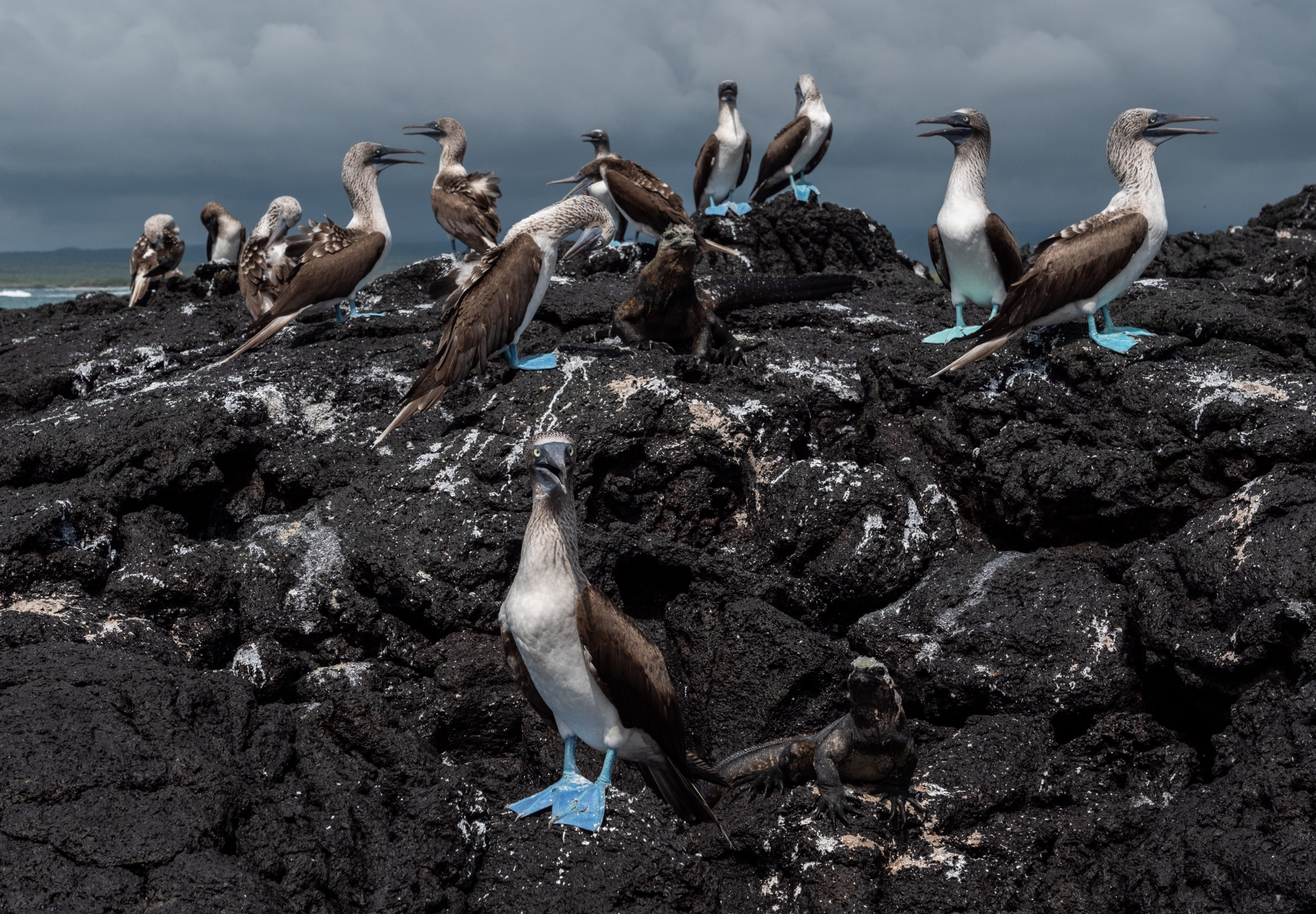
Blue-footed boobies rest on volcanic rocks in the town of Puerto Villamil on Isabela island on January 21, 2019 in Galapagos Islands, Ecuador. (Photo by Chris J Ratcliffe/Getty Images for Lumix)

A female blue-footed boobie on North Seymour island. Image: Supplied
As we neared the island, frigatebirds appeared in the sky, gliding effortlessly above the boundless Pacific Ocean, their great, angular wings outstretched, their deeply forked tails scissoring open and closed. They looked prehistoric, like pterodactyls that had breezed in from 150 million years ago. Were they magnificent or merely great? Hard to tell. They were certainly awesome.
These frigatebirds, however, have some nasty habits. They are plunderers that practise kleptoparasitism, which means that they steal prey from other birds. Sometimes they swoop down on hapless boobies in the sky and snatch fish out of their mouths. On land they have been known to shake other birds until they regurgitate their recently eaten food, which the frigatebird then devours. Not such magnificent or great behaviour, but it’s in their nature and they cannot do otherwise.
Unless, of course, one frigatebird with a mutant gene gets the notion that kleptoparasitism is uncool behaviour, and that it would be better (spiritually) for the survival of the species if such abhorrent behaviour were to cease, and then breeds with a frigatebird with a similar mutant gene, and the gene becomes dominant, and natural selection takes place and future generations of frigatebirds and boobies co-exist in blissful harmony… which seems doubtful, to say the least.
We alighted on the island. And there, barely a metre away, nestled in a Palo Santo tree was a magnificent (our naturalist confirmed this) frigatebird with a huge, bright red pouch blossoming from its throat.
The frigatebird pointed its pouch skywards and made a strange squawking sound.
“He’s trying to attract a mate,” said our naturalist. “When a female responds and lands next to him he will cover her with his wings to keep other males away. After they mate – and frigatebirds only mate every second year – the female lays one egg. The young bird will stay with its parents for a year.”
The frigatebird’s red pouch, I learnt, is called a gular sac. It takes the bird about 30 minutes to inflate it, and females are attracted to the biggest and brightest gular sacs. When they fight during the mating season, rival males attempt to puncture each other’s gular sacs. And having a punctured gular sac portends a rather bleak mating season. It’s like having a Porsche with four punctured tyres gathering dust in the garage.
We walked on, into the low-lying island, and suddenly there were blue-footed boobies everywhere on the brown soil. Females fed their fluffy young, males strutted comically about. And the strange thing was that – like the magnificent frigatebird – they had absolutely no fear of humans.
You could walk right up to them and they wouldn’t even spare you a curious glance.
The blue-footed booby is a big bird (its wingspan can reach 1.5m), with yellow eyes, a long pointed beak, brown wings, a pure white underbelly and bright blue webbed feet.
These blue feet – naturally – are a sexually selected trait, and during the mating season male blue-footed boobies lift their blue feet up and down while doing a dance in front of a female they hope to attract.
Before our eyes just such a dance was occurring. The female was perched imperiously atop a birdshit-bespattered rock, and looked coyly away as the male approached, raising his bright blue feet dramatically as he strutted over – and if there wasn’t a twinkle in his eye, his webbed feet were certainly twinkling.
His tail was up, and he whistled as he approached her. She replied with some grunts, which seemed to signify, “Away with you, you’ve got pale feet and you can’t dance for toffee”.
Undaunted, he continued his blue-footed dance underneath her, then whistled again and tried to click beaks with her. She grunted loudly and shook her beak violently against his, and he got the message and sidled off… plenty more boobies where she came from.
We carried on walking, to the beach, where a sea lion snoozed on black rocks and big crabs scurried about. Further down the beach was a lagoon where flamingos balanced balletically on one leg. Apparently they do this to conserve body heat and to reduce muscle fatigue.
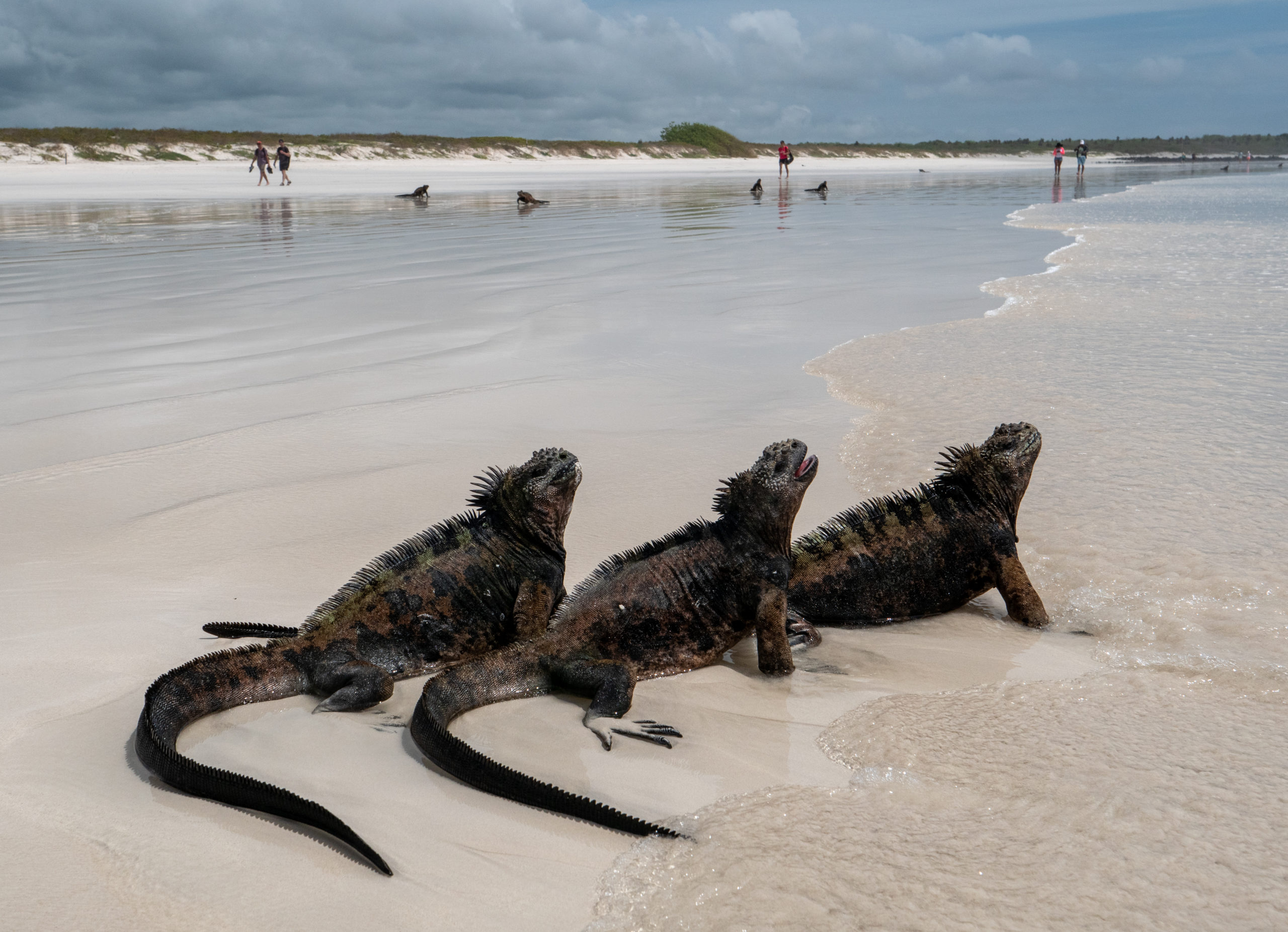
Marine iguanas, endemic to the Galapagos, on a beach on Santa Cruz island on January 24, 2019 in Galapagos Islands, Ecuador. (Photo by Chris J Ratcliffe/Getty Images for Lumix)

A pelican spreads its wings as surfers sit in the sea behind on San Cristobal island on January 15, 2019 in Galapagos Islands, Ecuador. (Photo by Chris J Ratcliffe/Getty Images for Lumix)

A Sea Lion swims past as a Frigatebird stands on a cliff on Santa Cruz island on January 16, 2019 in Galapagos Islands, Ecuador. (Photo by Chris J Ratcliffe/Getty Images for Lumix)
And then it was time for us to do some snorkelling and generally chill out on the beach, fanned by a balmy breeze on this modern-day Eden.
Later we sailed to Baltra island, took a ferry across the channel to Santa Cruz and then a bus to Puerto Ayora, which had been my home for the past week.
Puerto Ayora was as neat as a pin, no pollution, not even a cigarette stompie or ice cream stick on the sidewalks. The number of motor vehicles on the island is strictly limited: you have to wait for an old one to be retired before you can bring a new one in. There are cycle tracks alongside the road, a skateboard park, a basketball court next to the little harbour with its bobbing boats. Sea lions sun themselves on benches, pelicans wait patiently for offcuts at the little fish market, big clusters of marine iguanas huddle together, black and spiky and as still as sentinels, on the white beach of nearby Tortuga Bay. They fix you with basilisk stares, but other than that show no emotion when you approach them.
And everywhere there are giant sculptures of the island’s most famous inhabitant, Lonesome George. At one stage Lonesome George was the rarest creature in the world – the last individual of his species, a Pinta Island tortoise.
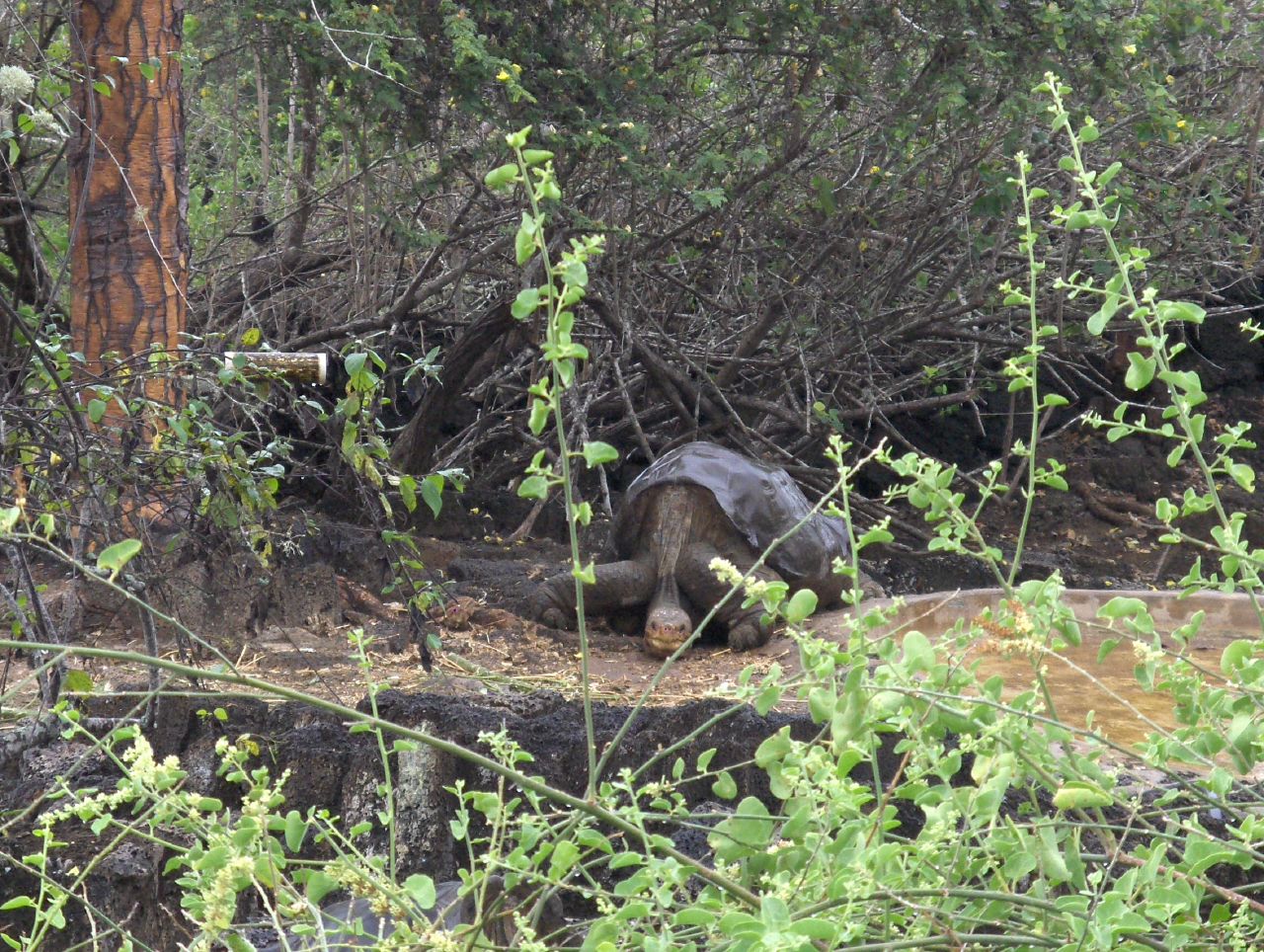
A giant tortoise, Galapagos. Image: Flickr
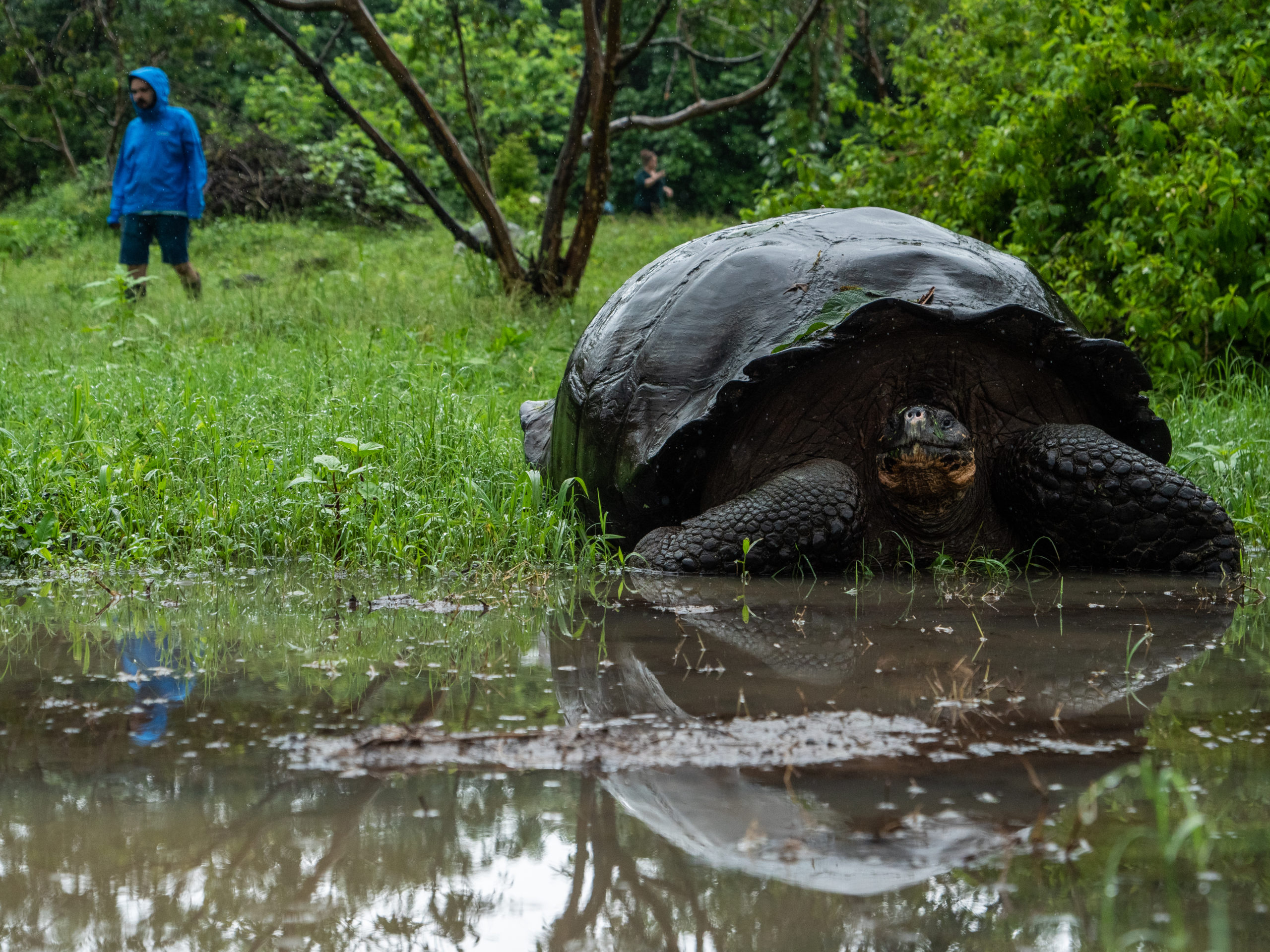
Tourists walk near giant tortoises in the highlands of Santa Cruz island on January 18, 2019 in Galapagos Islands, Ecuador. (Photo by Chris J Ratcliffe/Getty Images for Lumix)
There used to be hundreds of thousands of giant tortoises on the Galapagos, but then sailors and whalers discovered that they were delicious to eat and easy to catch. The tortoises dwindled, and after all the vegetation on Pinta Island was destroyed by (introduced) feral goats, it was believed that the Pinta Island tortoises were extinct… until one day in 1971 when a snail biologist spotted Lonesome George.
He was shipped over to the Charles Darwin Research Station on Santa Cruz, where he spent the next 40 years in captivity, the most famous tortoise in the world, the last and only one of his species.
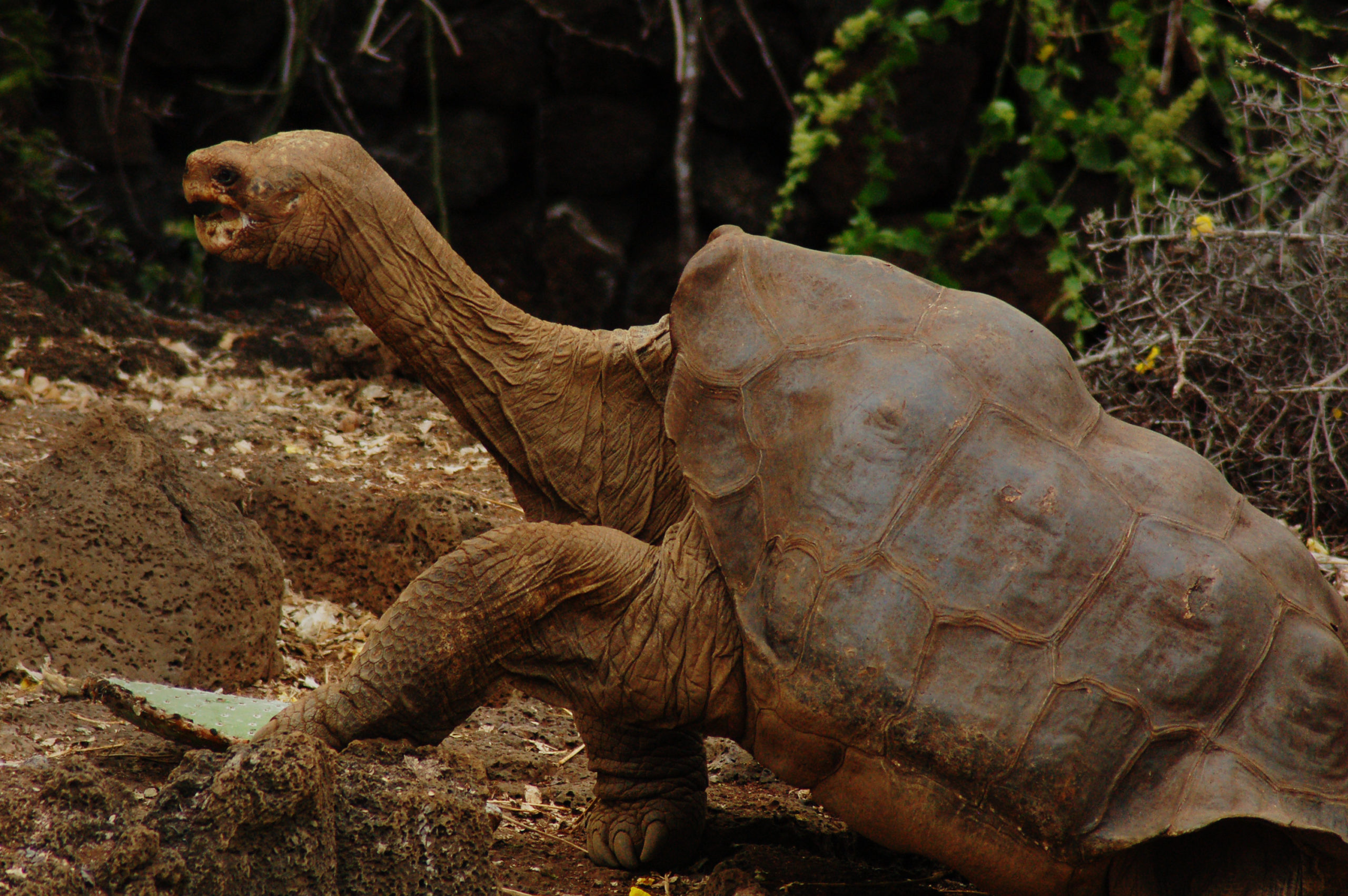
Lonesome George. Image: Peter Wilton / Flickr
He died on 24 June 2012 from a suspected heart attack and his body was shipped to the American Museum of Natural History in New York City to be preserved by taxidermists. It was flown back to Santa Cruz in 2017, and today you can see Lonesome George, with his curious expression, huge outstretched neck, one upraised foot, giant shell, frozen forever in that pose at the Fausto Llerena Breeding Centre in a special building dedicated to him.
“But please, do not use a flash when photographing him,” my naturalist (another naturalist, there is a plethora of naturalists on the Galapagos islands) warned me, as we stared reverently at the stuffed remains of the giant reptile, emblem of the extinction that threatens our world.
I was in the Galapagos last month, by which time 80% of the adult population of the archipelago (about 25,000 people) had been vaccinated against Covid-19. This was meant to kick-start the tourism industry, which had been devastated by the pandemic.
But the tourists – mostly vaccinated North Americans – were only just starting to trickle back, and once again I reflected how fortunate I was to be able to travel during a time of such extreme misfortune, when tourists were few and vistas were unsullied.
After Santa Cruz I spent a couple of weeks on San Cristóbal, the first island that Charles Darwin visited when The Beagle arrived in the Galapagos on 16 September 1835.
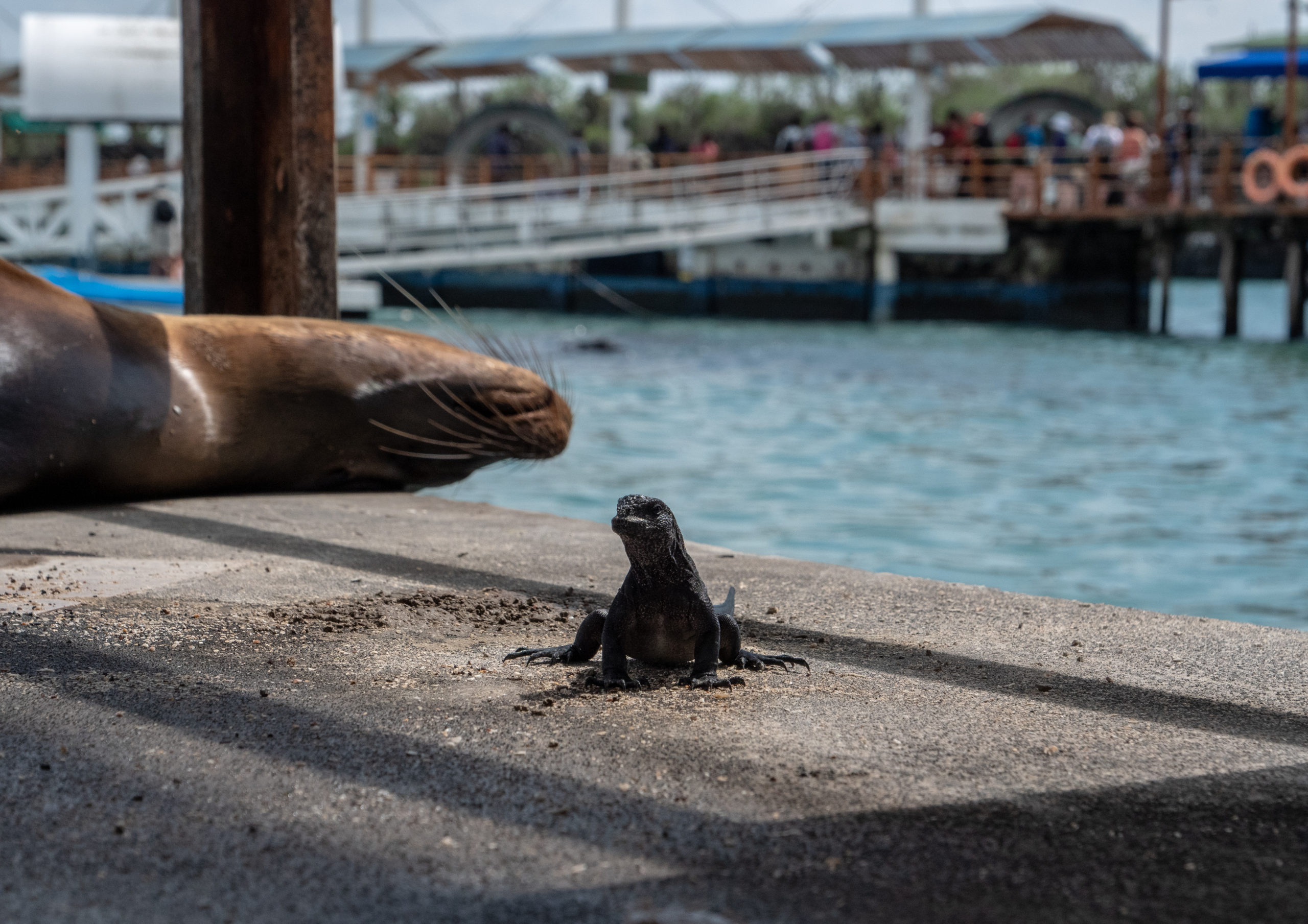
A marine iguana and sea lion on a pier in the town of Puerto Ayora on Santa Cruz island on January 18, 2019 in Galapagos Islands, Ecuador. (Photo by Chris J Ratcliffe/Getty Images for Lumix)
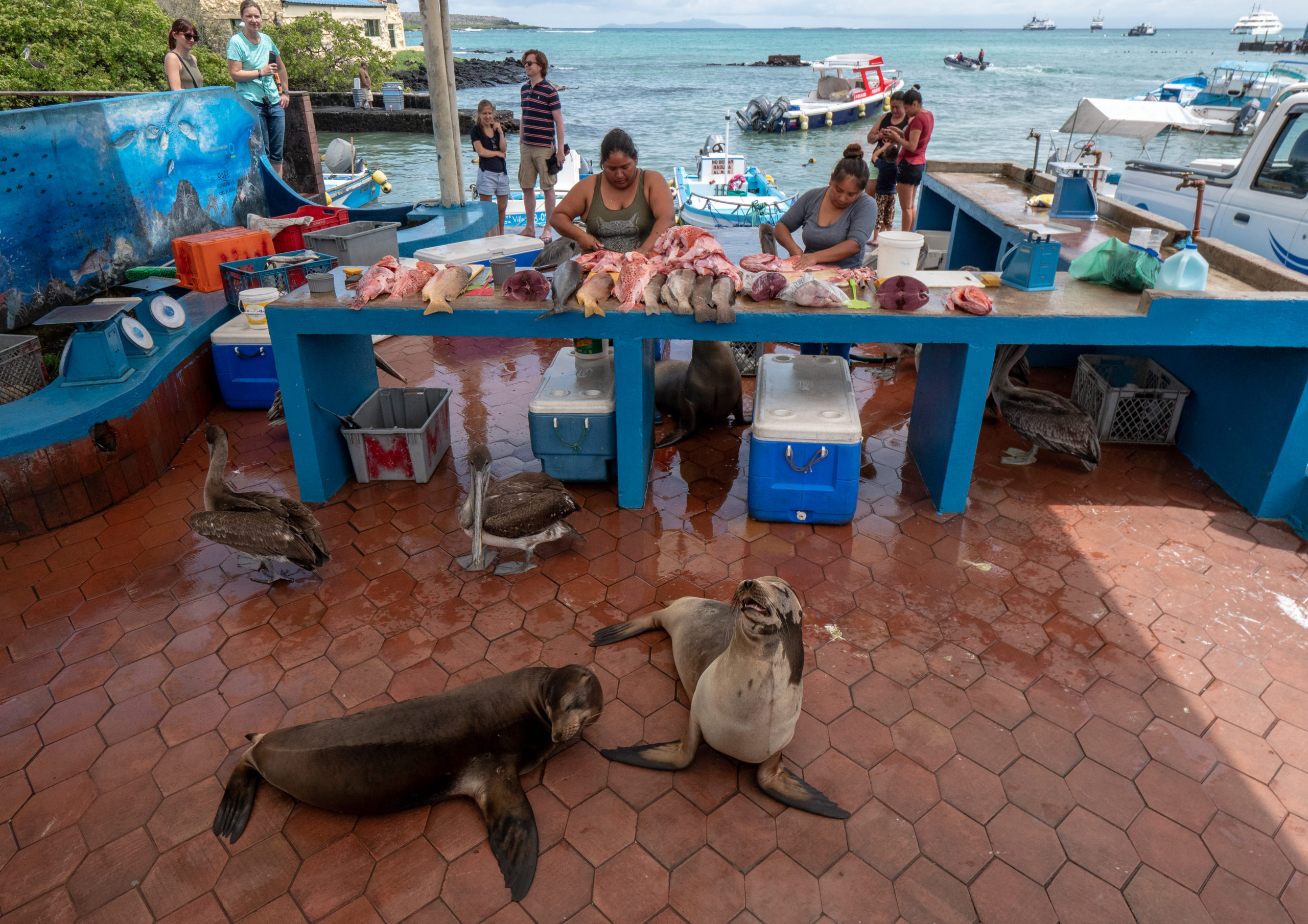
Frigates, pelicans, herons and sea lions surround the fish market in the town of Puerto Ayora on Santa Cruz island on January 18, 2019 in Galapagos Islands, Ecuador. (Photo by Chris J Ratcliffe/Getty Images for Lumix)
It seemed to be a kind of paradise for sea lions. They were everywhere, on the beaches, on the sidewalks, snoozing and sunning themselves during the day, and making the weirdest assortment of barks, grunts, snorts, coughs, sneezes, wheezes and whimpers during the night.
You’d be sitting on a beach, and a young sea lion would waddle/slide up to you, nudging your arm with its whiskers and staring at you with big manga eyes. Then it would waddle/slide off, looking like a circus performer of yore… the only thing missing was the beach ball balanced on its nose. DM/ML
















 Become an Insider
Become an Insider
Wonderful commentary, wonderful photographs! Some joy amongst all our current angst. Thank you Caspar Greeff and Daily Maverick.